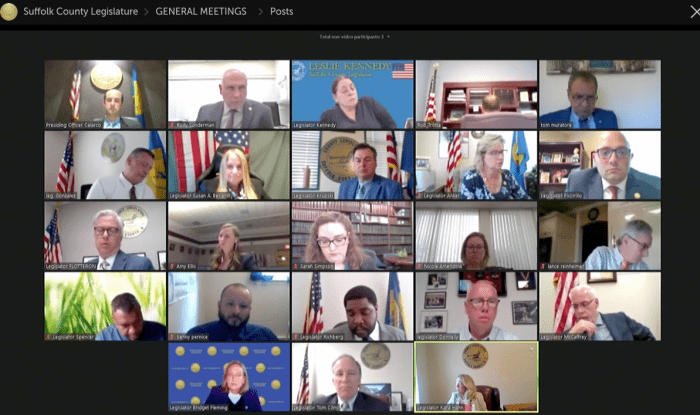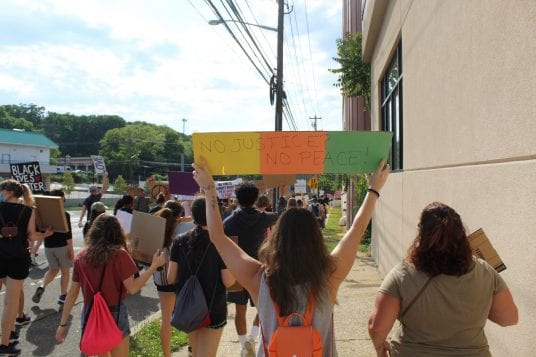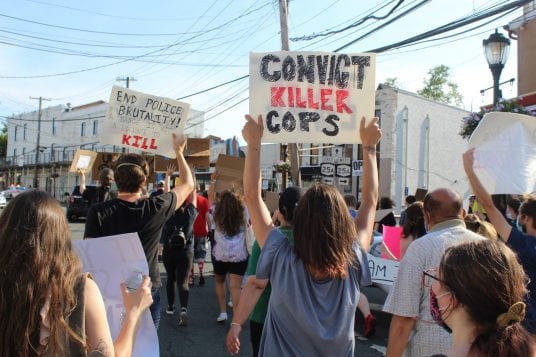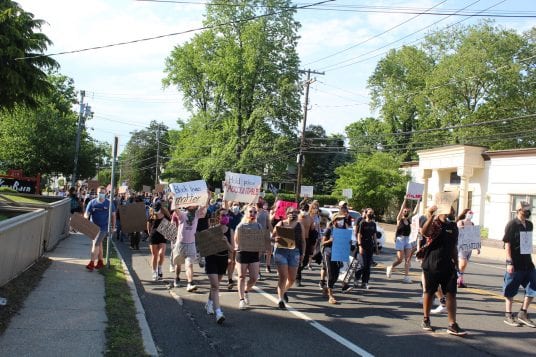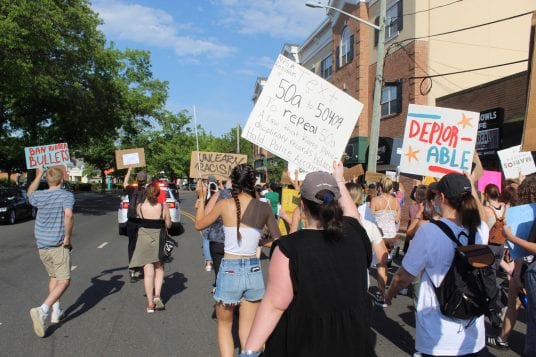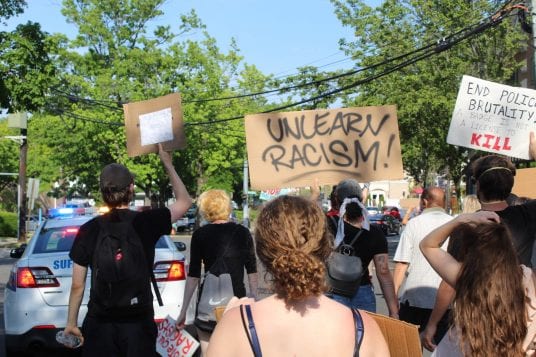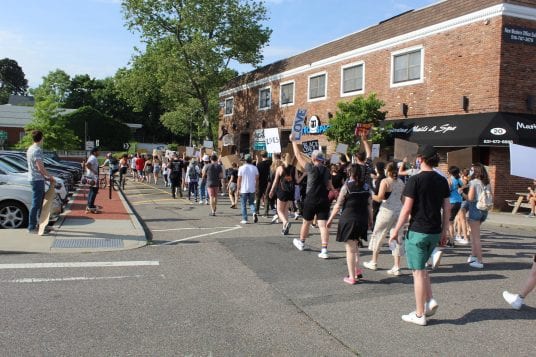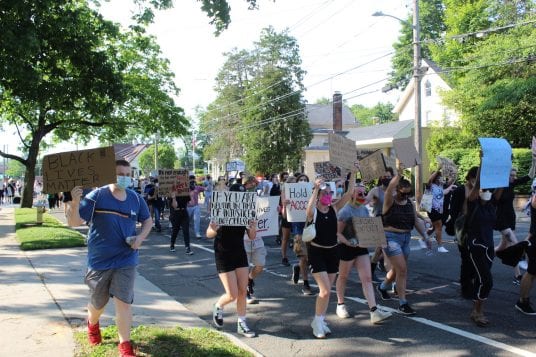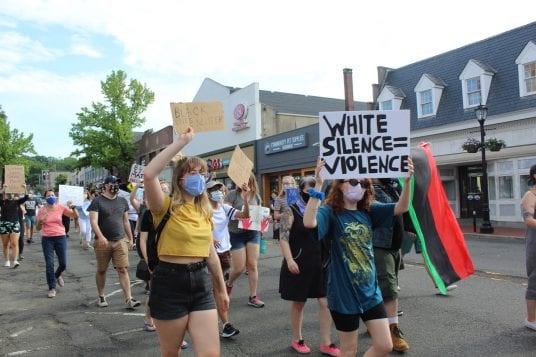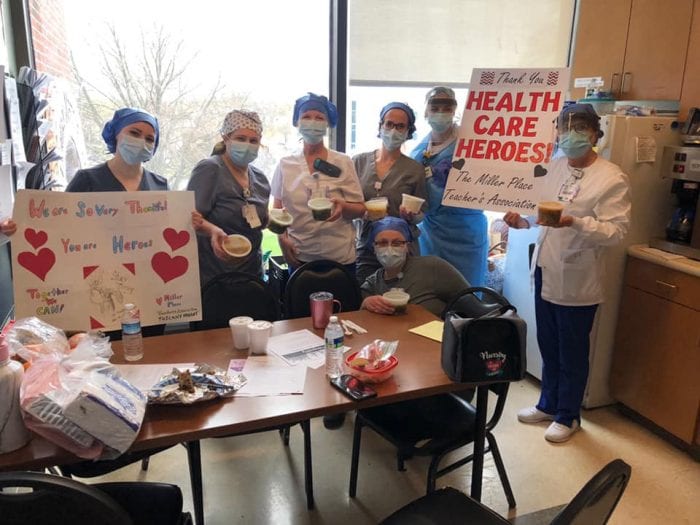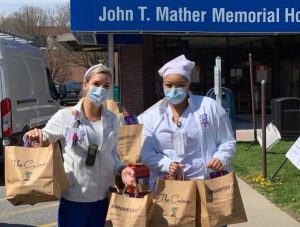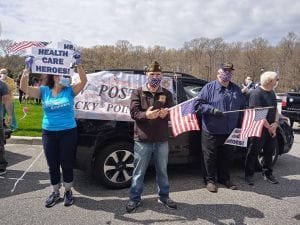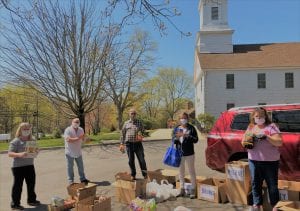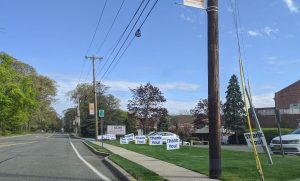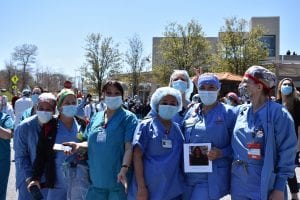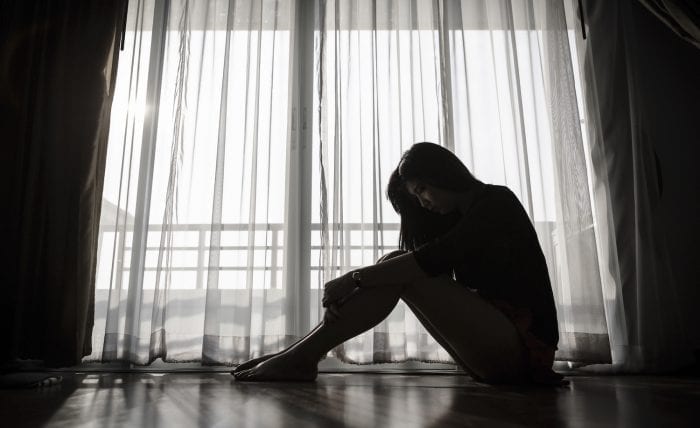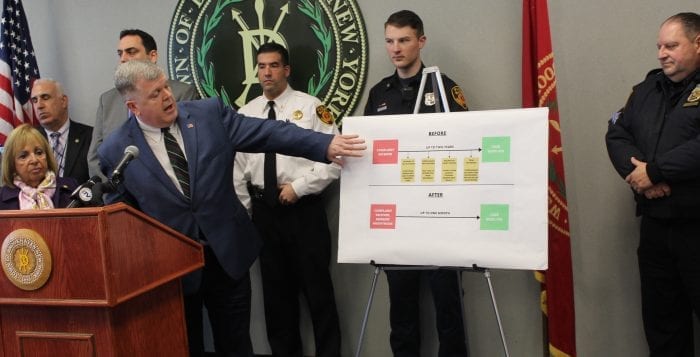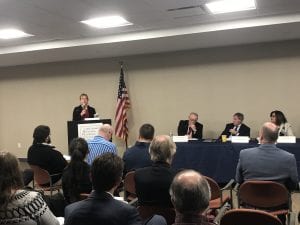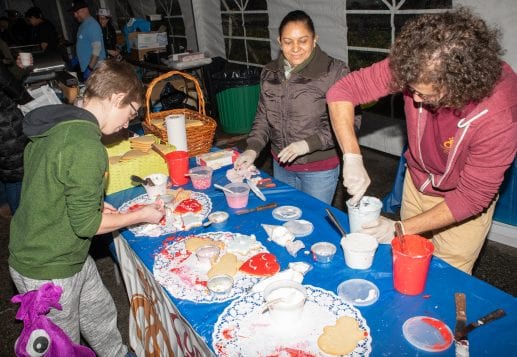“Hello?” “Can you hear me?” “Would that person please mute their mic?” “We can hear your dog barking/child yelling/lawn mower going …” and on and on.
These are comments well known to anybody who’s been paying attention to government meetings, of municipalities large and small, in this time of pandemic. When Gov. Andrew Cuomo (D) signed an executive order which temporarily nixed the requirements for local governments to hold in-person meetings, many organizations quickly had to come up with some sort of workaround to still hold their legally required meetings, though staying as socially distanced as possible while still remaining open for public view.

Zoom meetings, YouTube Live video, these are the new tools for conducting government business, but not all are equal in just how “open” these meetings are.
New York Coalition for Open Government, a small nonprofit organization, known until recently as Buffalo Niagara Coalition for Open Government, came out with a report May 12 grading different levels of government on their transparency, with all meetings being held online. The New York State Committee on Open Government, which is run from Albany under the Department of State, has opined that governments would still have to host visible livestreamed meetings to conform to both the governor’s executive order and the current Open Meetings Law. Some governing bodies have interpreted the governor’s order to mean a body could meet without allowing public access. The coalition organization instead points to opinions by the committee and people from the governor’s office that says agencies and all local governments should allow access to livestreamed meetings.
Kristin O’Neill, assistant director for the state Committee on Open Government, said in a phone interview that local governing bodies “must afford remote access to the meeting while the meeting is going on.” This does not have to be a video livestream, but it must allow the public the ability to listen to that meeting. She said it is not enough to post a transcript or video after for the public to listen to or read.
The nonprofit’s report found only four of 21 governments surveyed from all of New York state had met all their criteria, including having all meetings livestreamed, having videos/audio posted online after the meeting and having all meeting documents posted online prior to the meeting.
The coalition included another metric though it’s not required by the Open Meetings Law, specifically asking whether a government was soliciting public comments that are heard and/or seen during the meeting.
The open government coalition president, Paul Wolf, an attorney in upstate New York, said he feels it’s important for local governments to be judged on their willingness to listen to the public, despite it not being required by law.
“All right, there’s a pandemic going on, but you” can still hear from the public and hear their concerns,” he said. “[We had] some pushback and controversy on grades, but you have to somehow rank people and and have some calculation who’s doing good.”
Suffolk County and the Town of Brookhaven were given “B” rankings by the committee, noting both were not addressing public comments in their meetings. As of their last meetings in May and early June, both town and the county board meetings still were not enabling public comment.
“It’s good to push for this stuff, and that seems to be one of few ways to get elected officials’ attention that seems to prompt some change,” Wolf said.
That’s not to say it hasn’t been difficult for local government to make the adjustment to online meetings. Suffolk County Legislature Presiding Officer Rob Calarco (D-Patchogue) said the governing body had to figure things out on the fly. The last time all legislators were together for in-person meetings was March 17. He added it took time to get proper guidance from the state regarding hosting meetings. So far during the pandemic, the legislature has only allowed comment during public hearings.

Calarco said some legislators have made comments that current meetings have not been sufficiently open.
“I get that, and it is important for us to be transparent, but we have been trying to do it as effectively as we can,” he said. “For local government [having public comment] is an integral part of how our meetings operate — for residents to have ability to speak to us in public fashion.”
The next general meeting, June 9, will be the first time in two months the legislature will have a timeslot for public comment. People can visit the legislature’s website at scnylegislature.us and scroll down to the link for submitting public comment.
Brookhaven, on the other hand, is looking more toward a time when they can host in person meetings again, according to town spokesperson Kevin Molloy. He said Brookhaven has had to work through technical difficulties, but is complying with the law and the parameters of the governor’s executive order, adding there were no current plans to createa a public portion during online meetings.
The town allows for comment on public hearings, which can be submitted either in writing or with the person joining the town’s online meeting in video form. Molloy said the town has tried to push back non-time sensitive public hearings until later dates.
“We’re certainly trying to improve it, that means improvements in technology and the board is always trying to improve access to public,” Molloy said.
Despite this, different levels of government, including school districts, have found varying levels of success keeping their meetings open and responsive to the public.
TBR News Media has run through all school districts, villages and towns in our coverage area to check if its meeting four simple criteria. The point is not to degrade some and promote others, but to offer a means of comparison and give examples for how they can improve their openness to the public. Because of this, we have eschewed a letter grading system for our local governing bodies.
Port Jefferson Village is allowing for public comment via chat on YouTube but, as it has done in the past, has only hosted public portions every other week. Though this may have worked until now, the circumstances of the pandemic mean it may be time to change that policy.
School districts were perhaps the most consistent among municipalities for providing documentation and at least some communication of meetings and inquiries from residents. The Comsewogue school district has hosted a bevy of online options for students and district residents, including a website dedicated to offering stress relief for students, multiple Zoom meetings directly with students and a video of the budget hearing. However, the district has not posted any of its online board meetings after the fact to its website.
Grading Criteria (according to New York Coalition for Open Government)
- Are meetings being live streamed?
- Are meeting videos/audio posted online after the meeting?
- Are all meeting documents being posted online prior to the meeting?
- While not required by the Open Meetings Law, are local governments soliciting public comments that are heard/seen during the meeting?
Suffolk County 3/4 (As of June 9, this changed to allow a public comment period)
Meetings are being livestreamed through county website
Meetings video/audio/documents available after meeting
Meeting documents available before meeting
Public are allowed public comment only during public hearings
Town of Brookhaven 3/4
Meetings are being livestreamed and can be accessed by cable Channel 18
Meetings video/audio/documents available after meeting
Meeting documents available before meeting
Public are allowed public comment only during public hearings
Town of Smithtown 3/4
Meetings are being livestreamed
Meeting video/audio/documents available after meeting
Meeting agenda available before meeting
People are allowed public comment only during public hearings
Town of Huntington 3/4
Meetings are being livestreamed
Video and documents are available after meeting
Meeting agenda available before meeting
Public are allowed public comment only during public hearings
Village of Shoreham 2/4
Meetings are held by Zoom with notifications sent to residents
Video/audio of meetings not available after meeting
Some documents are available before meetings, but agendas are not
Public can make comments during meetings
Village of Belle Terre 3/4
Meetings are held via Zoom with notifications sent to residents
Meetings video/audio is not readily available post meeting
Meeting documents are posted before meetings are held
Public is available to make comments during regular meetings
Village of Port Jefferson 4/4
Meetings are being livestreamed
Meetings videos/audio/agendas posted online
Meeting documents posted before meeting
Comments being posted through YouTube then addressed by board, but only every other meeting
Village of Old Field 3/4
Meetings are being livestreamed with links sent to residents via Zoom
Meetings audio/video not posted online though minutes are
Meeting documents not posted before meetings
Trustee meetings regularly allow two public comment periods
Village of Poquott 3/4
Meetings can be accessed via dial-in code
Meeting video/audio of latest meetings not available
Documents are posted prior to meetings
Public is able to make comments during meetings
Village of Head of the Harbor 3/4
Residents can access meetings via links through notices
Meeting video/audio not available online
Documents are posted prior to meetings
Public is allowed comment during meeting
Village of Lake Grove 2/4
Meetings are being livestreamed via Zoom
Meetings audio/video not posted online
Documents are posted prior to meetings
Could not determine if public can comment during meetings
Village of Nissequogue 3/4
Meetings are being livestreamed
Meeting video is available after meeting
Documents are not posted before meeting
People are allowed public comment during meeting
Village of the Branch 3/4
Meetings are being livestreamed via Zoom
Meetings video/audio is not posted to the website after the meeting
Documents are posted to the website prior to meetings
People are allowed to comment during public portions of the meeting
Village of Asharoken 4/4
Meetings are being livestreamed via Zoom
Meeting minutes/agendas available after meeting
Meeting agendas are available after meeting but not video
Agenda available before meeting
Residents can ask questions prior to or during meeting
Village of Lloyd Harbor 4/4
Residents can listen in to meetings
Notices are present prior to meeting
Meeting agendas are available after meeting
Residents have been told they can comment during meeting
Village of Northport 4/4
Meetings are being held over teleconference call
Meeting audio not posted online after meeting
Agendas posted to website prior to meeting
Website says residents can ask questions of board via the web page
Shoreham-Wading River School District 4/4
Meetings are held publicly online via Zoom
Video of meeting posted after date held
Agendas are posted before meeting
Residents can comment during meetings
Rocky Point School District 2/4
Up until budget hearing, has not been having public board meetings online
Audio of meetings available on website
Board agendas posted prior to meeting
Public not able to comment on meetings up until budget hearing
Miller Place School District 3/4
Meetings held via Zoom
Video/audio of meetings not posted after meeting
Agendas posted prior to meetings
People may comment during meetings via chat
Mount Sinai School District 4/4
Meetings livestreamed via Zoom and on Facebook
Video of meeting posted afterward
Agendas posted prior to meetings
Questions from audience addressed during meeting
Port Jefferson School District 3/4
Meetings are being livestreamed
Meetings audio/visual/documentation available post meeting
Meeting agenda available before meeting
Public is not able to make comments during meetings
Comsewogue School District 2/4
Public has access to meetings via livestream
Meeting audio/video not available post meeting
Documents are available prior to meeting via BoardDocs
Questions are not being addressed at meetings
Middle Country School District 3/4
Meetings livestreamed from Google Meet
Meeting video is available post meeting
Documents are available prior to meeting via BoardDocs
The district has dispensed with public input
Three Village School District 3/4
Meetings are not being livestreamed
Meeting video available after meeting
Documents are available prior to meeting
Questions are not being addressed at meeting
Smithtown School District 4/4
All meetings are streamed live via Facebook
Videos available after meeting
Documents available before meeting via BoardDocs
Public can submit comments prior to meetings
Hauppauge School District 4/4
Videos streamed via Facebook Live
Videos available after meetings
Documents available on website
Residents can ask questions via Google Docs attached linked to the agenda
Commack School District 4/4
Meetings are publicly streamed through the district website
Meeting videos are available after meeting
Meetings documents are available prior to meeting via BoardDocs
Members of the district can ask questions via email,
Kings Park School District 4/4
Meetings are publicly available via Zoom
Meeting videos are available after meeting
Documents are available via BoardDocs
District allows for comments on call during prearranged comment period
Elwood School District 4/4
Meeting videos streamed live to YouTube
Meeting agendas available via BoardDocs
Videos are available after meetings
Questions are answered during latter section of meeting
Huntington School District 4/4
Meeting videos streamed live via Zoom call
Meeting video is available on the district website
Meeting agendas are available via BoardDocs
Residents can ask questions during Zoom meetings
Harborfields School District 4/4
The district livestreamed meetings via Vimeo
Agenda is available prior to meeting on district website
Video is available after the meeting dates
Residents can ask questions via email, and questions are answered at a determined time in the meeting
Northport-East Northport School District 4/4
Meetings are being livestreamed via IPCamLive
Videos are available after meetings
Agendas are available beforehand via BoardDocs
Questions can be sent via email and addressed during meeting
Cold Spring Harbor School District 4/4
Meetings are being livestreamed via Zoom
Videos of the boards hearings are available at the district’s YouTube page
Board agendas and documents are available at its meeting portal page
The board advises sending questions via email, which are addressed during the meeting
This article has been amended June 16 to update information about the Suffolk County legislature.

